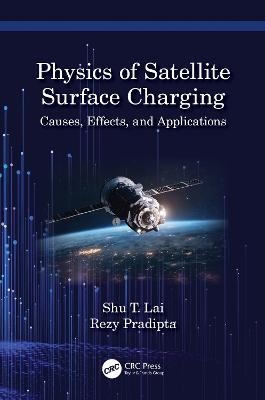
Physics of Satellite Surface Charging
CRC Press (Verlag)
978-0-367-22474-5 (ISBN)
It will be of interest to advanced undergraduate and graduate students, in addition to researchers working in physics and engineering keen to understand more about spacecraft interactions with space plasmas.
Key Features:
Translates complex terminology into accessible language
Authored by experts in the field
Provides worked examples and exercises for further learning
SHU T. LAI earned his Ph.D. and M.A. from Brandeis University and his B.Sc. from the University of Hong Kong. He earned his Certificate of Special Studies in Administration and Management from Harvard University. He did research at AFRL. He is currently affiliated with the Space Propulsion Laboratory, Massachusetts Institute of Technology, and the Institute of Scientific Research, Boston College. A recognized leader in spacecraft interactions with space plasmas, he has written more than one hundred publications and owns three patents. He is a Fellow of the Institute of Electrical Engineers (IEEE), a Fellow of the Institute of Physics, and a Fellow of the Royal Astronomical Society. He has served as the Chair of the AIAA Atmospheric and Space Environments Technical Committee and the Chair of the AIAA Atmospheric and Space Environments Standards Committee. He is now serving as a Senior Editor of IEEE Transactions on Plasma Science. REZY PRADIPTA earned his Ph.D. and S.M. in Nuclear Science and Engineering and his S.B. in Physics from the Massachusetts Institute of Technology. He did his postdoctoral work at the Institute for Scientific Research, Boston College. He is currently a senior research scientist at the Institute for Scientific Research, Boston College. His research is about space plasma phenomena and their potential impacts on technological systems using observations from multi-diagnostic instruments such as radars and Global Navigation Satellite Systems (GNSS). These space phenomena include ionospheric plasma density irregularities, traveling ionospheric disturbances (TIDs), acoustic-gravity waves (AGWs), and equatorial plasma bubbles (EPBs). In addition to research activities, he also teaches an upper level undergraduate course (Space Weather and Consequences) at the Department of Earth and Environmental Science, Boston College.
Foreword vii
Biography ix
CHAPTER 1 ■ Overview 1
CHAPTER 2 ■ Spacecraft Equilibrium Potential 11
CHAPTER 3 ■ Current Balance 19
CHAPTER 4 ■ How to Measure Spacecraft Potential 25
CHAPTER 5 ■ Secondary and Backscattered Electrons 33
CHAPTER 6 ■ Critical Temperature for the Onset of Spacecraft Charging 43
CHAPTER 7 ■ Importance of Surface Conditions 55
CHAPTER 8 ■ High-Level Spacecraft Potential 63
CHAPTER 9 ■ Spacecraft Charging in Sunlight 71
CHAPTER 10 ■ The Monopole-Dipole Model 81
CHAPTER 11 ■ The Question of Independence on Ambient Electron Density in Spacecraft Charging 91
CHAPTER 12 ■ Spacecraft Charging Induced by Beam Emissions 101
CHAPTER 13 ■ Mitigation Methods 115
Index 125
| Erscheinungsdatum | 21.03.2022 |
|---|---|
| Zusatzinfo | 3 Tables, black and white; 56 Line drawings, black and white; 56 Illustrations, black and white |
| Verlagsort | London |
| Sprache | englisch |
| Maße | 156 x 234 mm |
| Gewicht | 353 g |
| Themenwelt | Naturwissenschaften ► Physik / Astronomie ► Astronomie / Astrophysik |
| Naturwissenschaften ► Physik / Astronomie ► Plasmaphysik | |
| Technik ► Luft- / Raumfahrttechnik | |
| ISBN-10 | 0-367-22474-7 / 0367224747 |
| ISBN-13 | 978-0-367-22474-5 / 9780367224745 |
| Zustand | Neuware |
| Haben Sie eine Frage zum Produkt? |
aus dem Bereich


